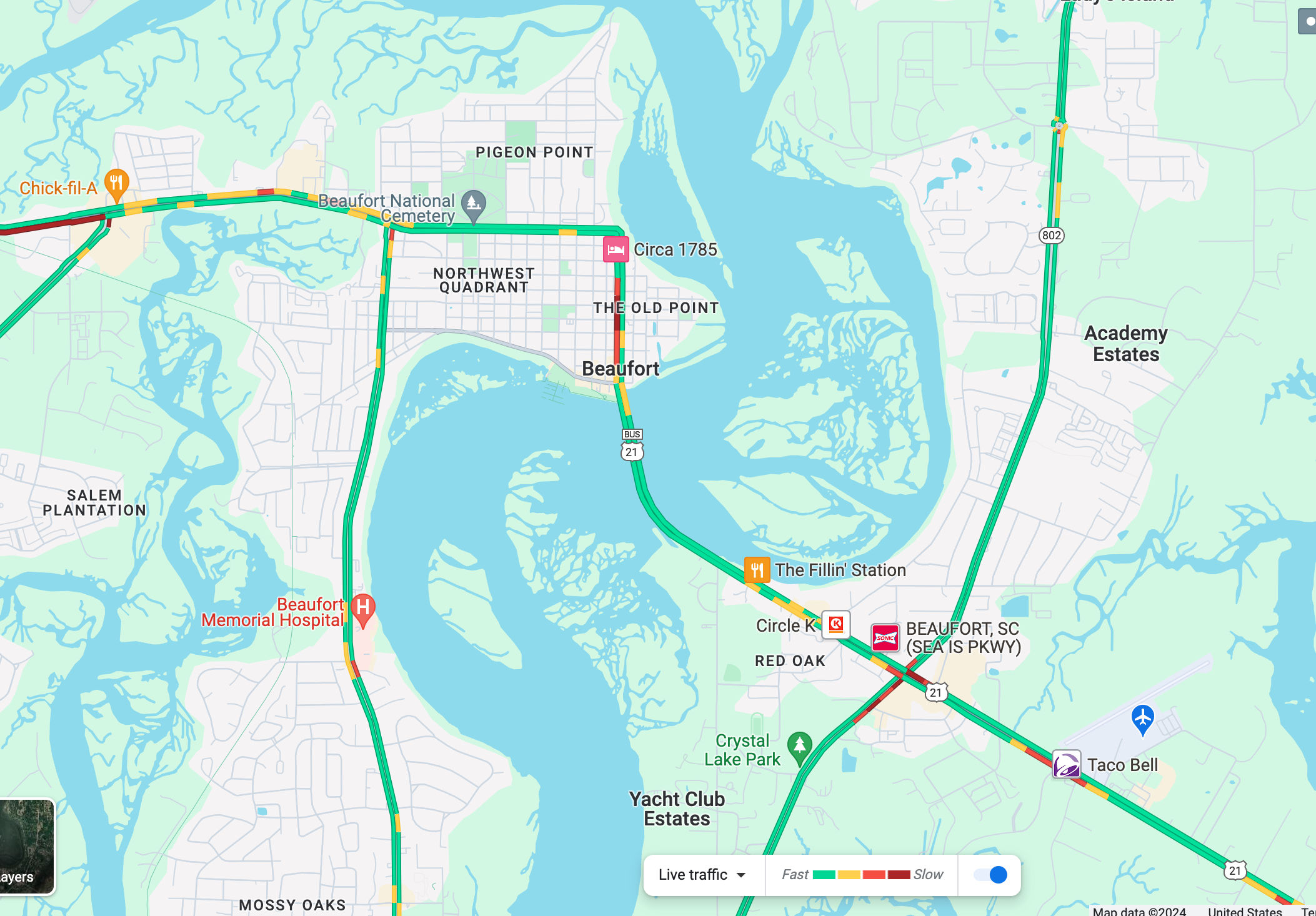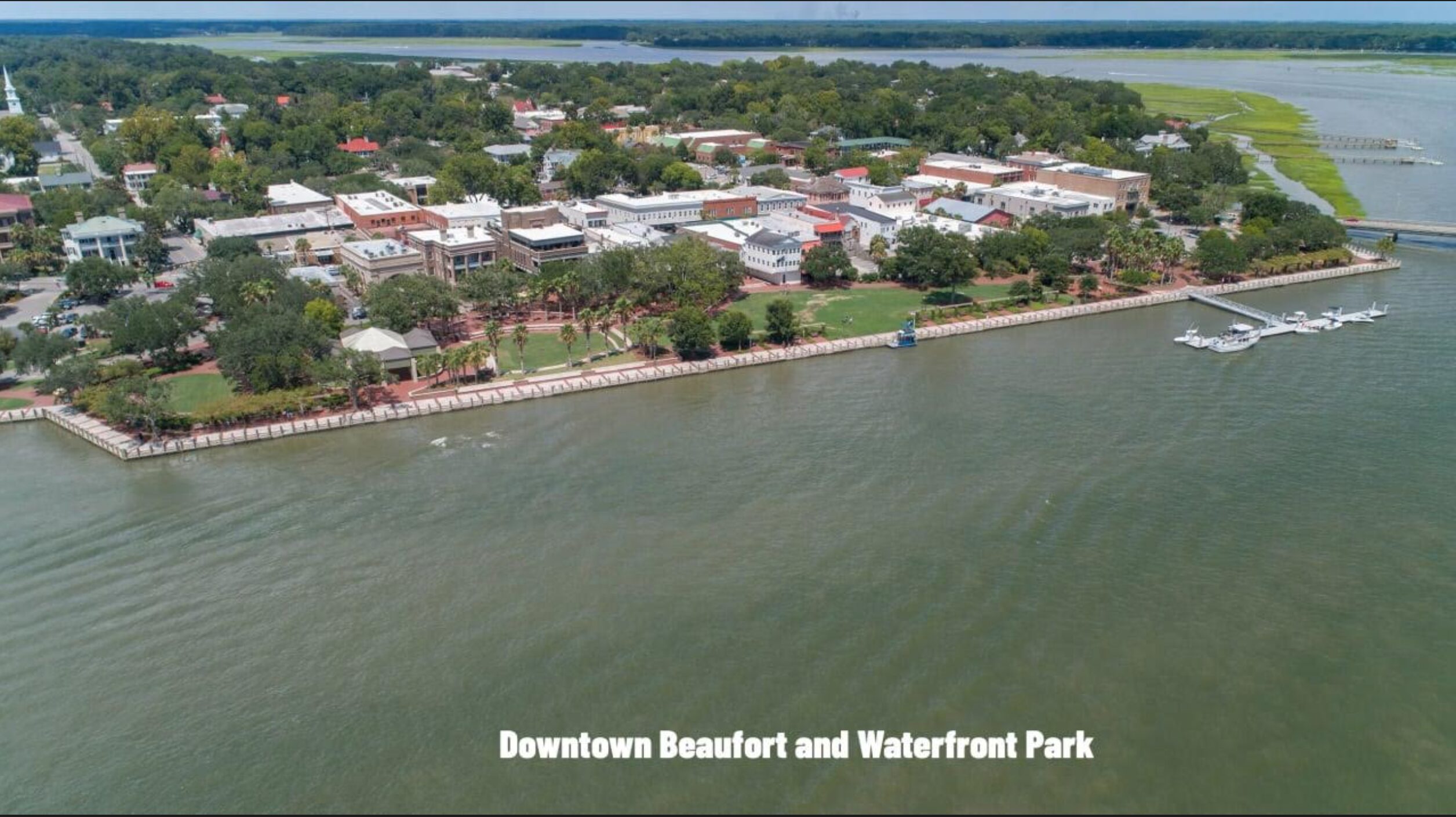The upcoming 2024 Sales and Use Tax Ordinance and Referendum has sparked significant public discussion among Beaufort residents. As they prepare to vote this November, many are reflecting on the funds collected from the last transportation tax in 2018. Over four years, this tax gathered $120 million, intended to improve traffic flow, develop pathways, and update crucial components of Beaufort’s transportation system. Yet, both locals and visitors still find themselves stuck in traffic bottlenecks and hoping for solutions.
Background on the 2018 Sales and Use Tax
The 2018 One-Cent Sales Tax Program was approved by voters on November 6th, 2018, with Beaufort County residents voting 58-42 in favor. The tax allocated funds for three main areas: $80 million for US278 Corridor traffic improvements, $30 million for Lady’s Island Corridor traffic improvements, and another $10 million for sidewalks and multi-use pathways. As almost three years have passed since the tax collection period ended, residents of Beaufort County are beginning to look around to see what their tax dollars have built.
Challenges in Project Implementation
In a recent interview with Beaufort City Councilman Josh Scallate said the current issue with the 2018 Sales Tax Referendum is that the original estimated costs provided to the city were substantially lower than the actual cost of the defined projects. “Some cases needed twice the amount of money estimated,” explained Scallate. To supplement remaining funds, about $90 million from the new proposed 2024 Sales and Use Tax Ordinance Referendum would be allocated to projects previously promised in 2018, such as the Lady’s Island Corridor and multi-use pathways. Because of the disparities in estimated costs, Councilman Scallate is not alone in saying that he is “not confident” that the estimates provided in the proposed 2024 Sales Tax reflect the actual cost of the projects, especially after amending it from $1.65 billion over 15 years to $950 million over 10 years. A list of all the proposed projects in the 2024 referendum can be found here.
Proposed 2024 Sales and Use Tax Ordinance
At the County Council’s first reading of the 2024 Sales Tax referendum, the county proposed to control all the funds from the tax which would eliminate the input of the municipal governments. In response, Beaufort City Council and the City Manager, Scott Marshall, wrote a letter to County Council criticizing how these actions “erode the municipalities’ influence over how the proceeds of the penny tax would be spent.” The letter began with concern that the new referendum did not include collaboration with any transportation authority or oversight committee, followed by criticism regarding County Councilman Logan Cunningham’s proposed amendment. This amendment would ensure that all proceeds of the tax would be held by the county until Council had approved its allocation and expenditure. Councilman Cunningham explained his amendment in the January 22nd meeting, stating that this decision would “make sure that this money is being used the way it is supposed to.” In response to this amendment, City Councilmen pointed out how it insinuates a level of mistrust with local municipalities. Councilman Josh Scallate took it a step further to propose how it could affect priority projects identified by the City, posing the important question, “how can we (the City of Beaufort) be certain that our priorities won’t get cut?”. Lastly, the letter questioned the allocation of funds to the area North of the Broad, which was previously undefined in the first reading of the referendum. Essentially, the letter served as a reminder to the County Council that the City’s support of this referendum was based on “the belief that it would ultimately be in the best interest of the citizens of the City of Beaufort and surrounding area,” however, that belief waned with this interpretation of the proposed ordinance.
City of Beaufort’s Priorities
Right now, Beaufort is at a turning point, with an opportunity to make drastic changes to its systems that will improve transportation in the area for decades to come. Putting aforementioned concerns aside, “we need these funds because we are behind in transportation,” said Councilman Scallate in an interview with Beaufort Insider. As attention turns towards which projects should be prioritized under the 2024 Sales Tax, it is Councilman Scallate’s recommendation that the city should refer to previously identified projects rather than trying to formulate new ideas. “There are a lot of studies and past efforts that we can cherry-pick from and save money,” explained Scallate, referencing various completed research studies, consultations, and project designs that were paid for but never developed. By utilizing past studies and efforts, the city can make informed decisions that ensure that resources are efficiently allocated and past work is not wasted.
US278 Corridor Improvements
The biggest piece of the 2018 transportation pie, $80 million, went to fund improvements on the US278 Corridor from Moss Creek Drive in Bluffton to Spanish Wells Road on Hilton Head Island. According to the South Carolina Department of Transportation (SCDOT), the project is designed to “address structural deficiencies at the existing eastbound Mackay Creek bridge, increase capacity, and reduce congestion” within the defined limits. As the project is now fully funded, SCDOT is reportedly “refining the design and preparing to present a preferred alternative to the public,” according to Beaufort County Penny. A replacement of the eastbound Mackay Creek Bridge will be the most crucial component of this project, though other potential improvements are being discussed. Once the ideas put forth by the public and community stakeholders are approved, SCDOT will present the plan to the public for input, but they have not shared a timeline of when this will happen.
Lady’s Island Corridor Projects
The 2017 Lady’s Island Corridor Study led the way in planning for multiple projects in the Lady’s Island Corridor. This study, which involved the City of Beaufort, Ward Edwards Engineering, and Stantec Consulting, defined nine projects, only two of which have been completed. According to Beaufort County Penny, a follow-up study was completed in 2021 to see how well the 2017 projects worked in decreasing traffic congestion, and define the remaining issues with Lady’s Island Corridor. Additional solutions listed in the 2021 study include building seven new connections as alternate routes, enhancing bicycle and pedestrian sidewalks by widening them with multi-use paths, and adding a new Beaufort High School access road.
Sidewalk and Multi-use Pathways
The remaining portion of the 2018 transportation tax, amounting to $10 million, has been allocated to fund sidewalk and multi-use pathways across Beaufort County. Since the tax collection’s completion, 24 multi-use pathways and 14 sidewalks have been defined by Beaufort County Council. In May 2019, County Council developed a list that prioritized which pathways should be established first in order to “distribute the funding as evenly as possible and to maximize available funding.” Today, only one of the projects has been completed, a five-foot-wide sidewalk on Ribaut Road from Lenora Drive to the existing sidewalk at Rahn Lane. Two additional projects are currently being constructed: an eight-foot pathway connecting the existing pathway on Bluffton Parkway to Bluffton Road, and a ten-foot multi-use pathway on Laurel Bay Road from the Laurel Bay Military Housing Complex to Trask Parkway. Residents can see the status of these projects for themselves on the Beaufort County Penny website, where each of the priority pathway projects is listed.
Public Participation and Awareness
Public education about the 2024 proposed sales tax will be the most important factor in the coming months, which will begin with a campaign from Beaufort County, followed by local municipalities. Councilman Scallate told Beaufort Insider that he is ready to play his part, naming future plans to go door-to-door to discuss the tax with his constituents and educate the public on the upcoming November ballot. Encouraging resident participation is crucial for the success of these projects. By actively engaging with the City Council and attending public forums, residents can ensure their voices are heard and that the tax funds are used in the community’s best interest.
Beaufort is at a critical juncture with the 2024 Sales and Use Tax Ordinance and Referendum. Reflecting on the lessons from the 2018 tax and communicating with elected representatives, residents have the chance to shape the future of their transportation system. By staying informed, participating in public discussions, and holding officials accountable, Beaufort can pave the way for a more efficient and effective transportation network. To become a part of the conversation regarding the 2024 Sales and Use Tax Ordinance Referendum, residents can get involved by attending public meetings or writing to the City Council via email. Visit the Beaufort County Penny website to see and attend scheduled meetings regarding the 2018 One Cent Sales Tax Program. To comment on the US278 Corridor improvements, visit the SCDOT website.




Pingback: Edie Rodgers Scolds Beaufort County Council - Beaufort Insider